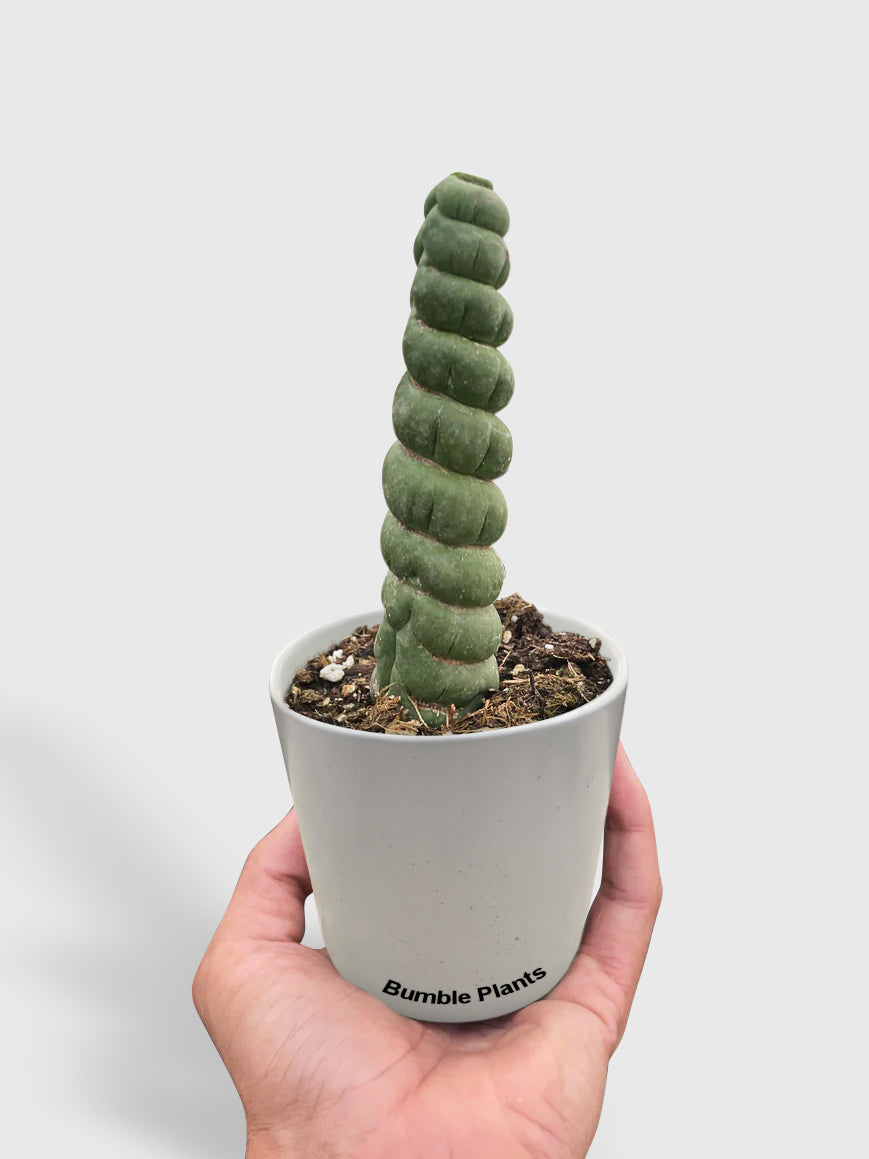The Unicorn Cactus is a rare and whimsical cactus variety known for its unique shape, colorful spines, and mystical appearance. With its slow-growing nature and minimal care requirements, this enchanting plant is perfect for collectors and plant enthusiasts looking to add a magical touch to their indoor garden.
How to Care for Unicorn Cactus
Watering
Water sparingly—only when the soil is completely dry. Overwatering can lead to root rot, so ensure the pot has excellent drainage. During winter, reduce watering even further.
Sunlight
Thrives in bright, direct sunlight. Place it near a south- or west-facing window for the best growth. If grown indoors, supplement with a grow light if necessary.
Temperature
Prefers warm temperatures between 65°F-85°F (18°C-29°C). Avoid exposure to frost or cold drafts, as temperatures below 50°F (10°C) can harm the plant.
Humidity
Does well in low to moderate humidity. No additional humidity adjustments are needed, making it perfect for dry indoor environments.
Toxicity
The Unicorn Cactus is non-toxic to pets and humans. However, its spines can be sharp, so handle with care.
Fertilizer
Feed with a diluted cactus fertilizer once a month during the growing season (spring and summer). No need to fertilize during fall and winter.
Growth Rate
A slow-growing cactus that develops its unique form over time. With proper care, it can grow several inches tall and develop more defined spines.
Pruning
Minimal pruning is needed. Remove any dead or shriveled sections carefully with sterilized scissors.
Propagation
Can be propagated from pups or offsets if they appear. Allow cuttings to callous over for a few days before planting them in dry soil.
Soil Mix
Prefers a well-draining cactus or succulent mix. You can also create your own blend using sand, perlite, and potting soil for optimal drainage.
Repotting
Repot every 2-3 years or when the cactus outgrows its pot. Use a slightly larger pot with good drainage.
Common Pests
Watch for mealybugs, spider mites, and scale insects. If pests appear, treat them with neem oil or insecticidal soap.
Common Problems
-
Soft or mushy base – A sign of overwatering. Allow the soil to dry completely before watering again.
-
Wrinkled skin – Indicates dehydration. Give the plant a deep but infrequent watering.
-
Yellowing spines – Could be caused by too much sunlight or lack of nutrients. Move to partial sun and fertilize as needed.

